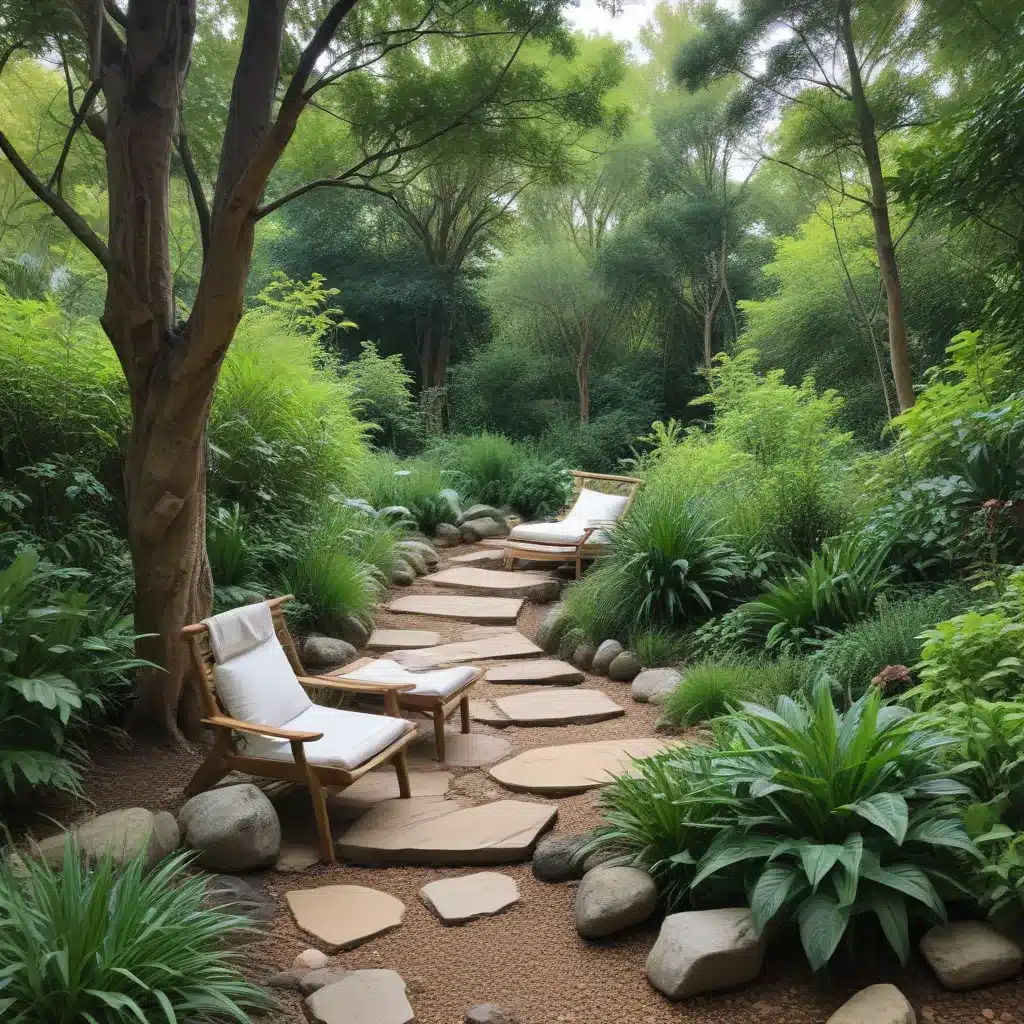
Biophilic design – the practice of connecting people to the natural world through the built environment – is gaining momentum as a powerful strategy for promoting mental health and wellness. At TriCounty Tree Care, we understand the profound impact that thoughtfully designed landscapes can have on an individual’s psychological restoration and overall sense of well-being.
Landscape Design Principles
Biophilic Design Approaches
Incorporating biophilic elements into landscape design can have a transformative effect on the mental health of those who experience the space. By strategically integrating natural features, designers can create restorative outdoor environments that alleviate stress, boost mood, and enhance cognitive function. Some key biophilic design approaches include:
- Visual connection with nature: Ensuring ample access to views of vegetation, water, and other natural elements can have a calming, rejuvenating effect.
- Non-visual connection with nature: Incorporating natural sounds, scents, and textures can stimulate the senses and foster a deeper connection with the environment.
- Dynamic and diffuse lighting: Designing for optimal daylighting and mimicking natural light patterns can support circadian rhythms and promote relaxation.
Therapeutic Garden Elements
Strategically incorporating specific garden elements can further enhance the mental health benefits of a landscape. Therapeutic gardens often feature:
- Water features: The soothing sounds and visual appeal of fountains, ponds, or streams can induce a state of mindfulness and calm.
- Sensory plantings: Fragrant flowers, tactile foliage, and vibrant colors can engage the senses and elicit positive emotional responses.
- Meandering paths: Gently winding walkways encourage slow, contemplative movement and exploration of the space.
Sensory Stimulation Strategies
Designing for multisensory engagement is a hallmark of restorative landscapes. By appealing to the senses, these environments can foster a deep, immersive connection with nature and promote mental restoration. Effective strategies include:
- Auditory cues: The gentle rustling of leaves, the chirping of birds, and the soothing sounds of water can have a profoundly calming effect.
- Olfactory experiences: Incorporating fragrant plants, like lavender or rosemary, can evoke positive associations and reduce stress.
- Tactile elements: Varied textures, such as smooth river rocks or soft, fuzzy foliage, invite visitors to interact with the landscape.
Mental Health Benefits
The research on the mental health benefits of restorative landscapes is extensive and compelling. By creating calming, therapeutic environments, designers and landscape professionals can support the psychological well-being of their clients and communities.
Stress Reduction
Numerous studies have demonstrated the stress-reducing properties of natural environments. Exposure to green spaces has been linked to lower levels of the stress hormone cortisol, as well as reduced physiological indicators of anxiety and tension.
Mood Improvement
Spending time in therapeutic landscapes can have a positive impact on mood and emotional well-being. Research has shown that interacting with nature can alleviate symptoms of depression and anxiety, while also enhancing feelings of happiness and life satisfaction.
Cognitive Enhancement
Restorative landscapes can also support cognitive function and mental restoration. According to studies, exposure to natural environments can improve attention, memory, and the ability to focus, making them valuable assets for individuals seeking mental clarity and enhanced productivity.
Sustainable Design Practices
At TriCounty Tree Care, we believe that creating restorative landscapes must be balanced with environmentally responsible practices. By incorporating sustainable design principles, we can ensure that these therapeutic spaces not only benefit human health but also contribute to the overall health and resilience of the local ecosystem.
Ecological Restoration
Incorporating native plant species and restoring degraded habitats can have a positive impact on local biodiversity and ecosystem functions. This, in turn, can enhance the mental health benefits of the landscape by providing a richer, more vibrant natural experience.
Climate-Responsive Features
Designing landscapes that are adapted to local climate conditions can improve their long-term sustainability and resilience. This may involve selecting drought-tolerant plants, implementing water-efficient irrigation systems, or incorporating passive cooling strategies to reduce energy consumption.
Renewable Materials
Utilizing renewable, eco-friendly materials in the construction and maintenance of therapeutic landscapes can minimize the environmental impact of these spaces. This includes using locally sourced, sustainably harvested wood, recycled plastics, or innovative materials derived from natural sources.
Holistic Well-Being Experiences
The true power of restorative landscapes lies in their ability to provide a multifaceted, holistic experience that nourishes the mind, body, and spirit. By thoughtfully integrating a variety of elements, designers can create spaces that foster mental, physical, and emotional well-being.
Mindfulness and Meditation
Therapeutic landscapes can serve as ideal settings for mindfulness practices and meditation. The calming sensory experiences, coupled with the opportunity for quiet reflection, can help individuals cultivate a state of present-moment awareness and inner peace.
Art and Nature Integration
Combining natural elements with artistic installations, such as sculptures, murals, or interactive installations, can create a harmonious synthesis that stimulates the senses and inspires creativity. This intersection of art and nature can further enhance the restorative qualities of the landscape.
Restorative Activities
Therapeutic landscapes can also serve as backdrops for a variety of restorative activities, such as yoga, Tai Chi, or forest bathing. These practices, when performed in a natural setting, can amplify the mental health benefits and foster a deep, embodied connection with the environment.
At TriCounty Tree Care, we are passionate about the transformative power of restorative landscapes and their ability to enhance mental well-being. By incorporating biophilic design principles, sustainable practices, and holistic well-being experiences, we strive to create calming, therapeutic spaces that nurture the mind, body, and spirit. Visit TriCounty Tree Care to learn more about our comprehensive services and how we can help you transform your outdoor environment into a restorative retreat.


